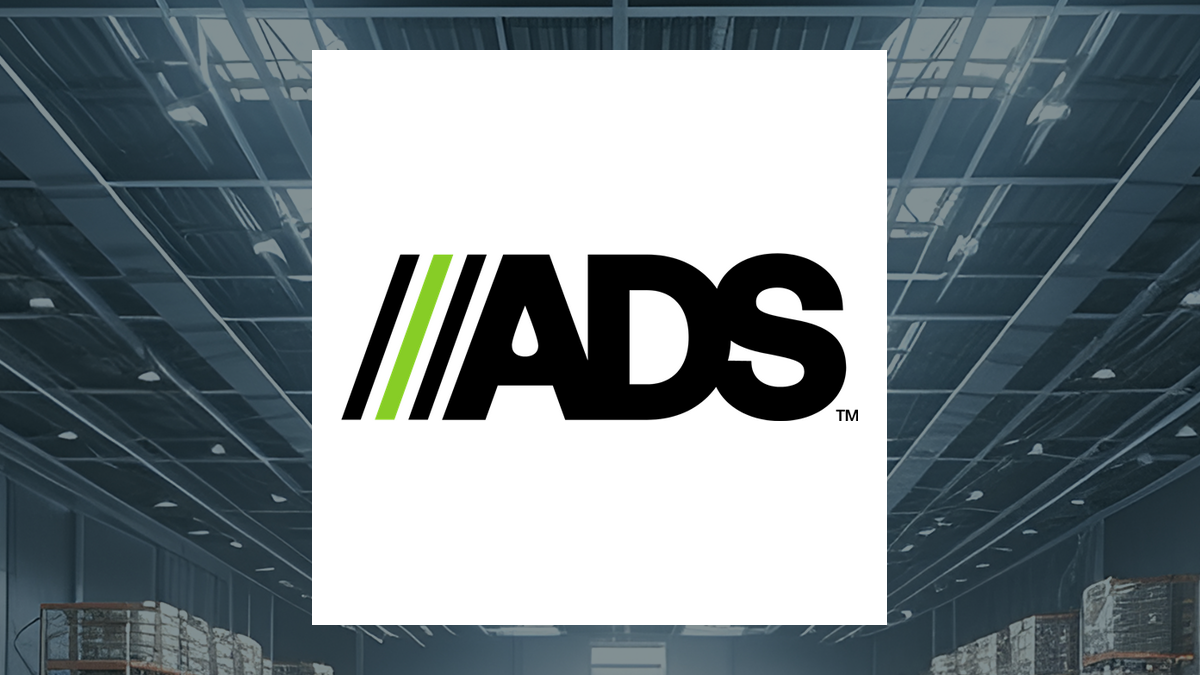President Donald Trump late Wednesday ordered the U.S. government to end duty-free treatment for small-dollar shipments from China and Hong Kong, effective May 2, as a way to cut off illicit imports of synthetic opioids and level the playing field for domestic retailers.
The action is expected to upend e-commerce supply chains and could hurt the air cargo industry, which moves most cross-border packages for online retailers. Under U.S.

trade law, goods valued at $800 or less shipped to a single person per day are exempt from duty and taxes. The de minimis exemption also allows customs officials to Finally, US law allows low-value shipments to bypass this process altogether. For nearly 90 years, Section 321 of the Tariff Act of 1930 (known as the de minimis exemption), as amended, has allowed customs officials to waive import duties and customs paperwork—and bypass a customs broker—for low-value foreign packages entering the United States.
Large e-commerce platforms and logistics suppliers have been preparing new import strategies in anticipation of tighter de minimis rules following an aborted crackdown in February.The executive order means low-value goods shipped through commercial supply chains will be subject to all duties imposed on Chinese products, including a new 34% tariff under a global reciprocal trade enforcement policy unveiled Wednesday that differs by nation. The 34% tariff stacks on top of a 20% tariff imposed on all Chinese goods earlier this year, tariffs imposed by Trump in 2018 and small, preexisting baseline tariffs.
The average U.S. tariff on Chinese exports is 42%, according to a chart published by the Peterson Institute for International Economics prior to the new directive.
Items sent via the international postal system that no longer qualify for the de minimis exemption will face a duty rate of either 30% of their value or $25 per item, increasing to $50 per item after June 1. At least two-thirds of de minimis shipments move through nonpostal airfreight channels. Parcels moving by post from China are mostly sent by small retailers or individuals.
The executive order places the onus for collecting and transmitting postal import fees on carriers. CBP has discretion to require a formal entry for any postal package instead of the specified duties, which would subject it to the full range of China tariffs.Trump is essentially trying to shut down the flow of parcels through the international postal exchange between China Post and the U.
S. Postal Service, Izzy Rosenzweig, CEO of Portless, an e-commerce middleman that fulfills customer orders from a warehouse in Shenzhen, China, said in a phone interview. The goal, he explained, is to force shippers to the primary business model where retailers buy air cargo space with the help of a logistics provider who clears the goods through customs at the port of entry and passes them to the Postal Service or regional couriers for final-mile delivery.
“What he wants is the only thing you’re sending in the postal system is letter mail. If you’re not sending letter mail you’re paying 25 bucks, which means, it makes no sense to use the postal system for any parcel shipments at all,” he said. “The main reason they’re doing that is because the postal system has few data requirements, which makes it very hard to fight fentanyl.
”Large e-commerce players like Shein and Temu don’t use postal channels in bulk because delivery can take up to three weeks, is unreliable and packages are labeled in Mandarin, not English, according to parcel shipping executives. Lenny Feldman, a prominent trade attorney and managing partner at Sandler, Travis & Rosenberg, said it was “unprecedented” to make carriers responsible for regulating the goods they carry.“The carrier essentially has the right to make entry and is responsible for duties like a de facto importer of record,” he told FreightWaves.
The importer of record is the legal entity or person responsible for ensuring that all goods comply with a country’s import rules. “I would tell carriers to very carefully consider whether they wish to undertake this responsibility and if they are prepared to comply with all the necessary legal and regulatory requirements it entails,” he warned.Carriers currently don’t have enough information to meet the new requirements because flight manifests they file with customs authorities simply list the number of postal pouches in the hold, with few other details, explained Cindy Allen, a former vice president of regulatory affairs and compliance at FedEx Logistics and founder of consulting firm Trade Force Multiplier, in an interview.
Integrated carriers like FedEx and UPS already collect the required information from shippers because they handle the end-to-end delivery within a closed system, but commercial airlines will need to set up new data collection and processing mechanisms, experts say.The secretary of commerce will assess the impact of the new rules within 90 days and determine whether to extend them to packages from Macau, the White House said. The de minimis exemption remains in place for other countries, but that may change once officials are confident CBP is set up to process and collect the tariff revenues globally.
The order called out the lack of de minimis leniency for U.S. goods in China, which tightly limits exemptions for low-value goods.
Ram Ben Tzion, co-founder and CEO of Publican Trade Solutions, a freight vetting platform, said the U.S. order is a negotiating bid to get China to stop fentanyl smuggling and give the U.
S. the same duty-free treatment on parcel shipments. If that happens, Trump might revoke the de minimis ban.
Newly imposed tariffs of 46% on Vietnam, 36% on Thailand and 49% on Cambodia could price out those countries, for example, from becoming alternative sourcing locations if de minimis treatment is suspended for them in the near future.Reining in trade facilitation to curb fentanyl Congress raised the de minimis threshold in 2016 from $200 to $800 to make it easier for small businesses on platforms like Etsy to competitively source goods overseas. Use of de minimis picked up in 2018 when the first Trump administration imposed significant tariffs on Chinese imports.
The new duties prompted Chinese merchants and some U.S. importers to take advantage of de minimis and restructure operations around direct-to-consumer shipping instead of bulk shipping to U.
S. agents who de-consolidate containers in a warehouse and send each package to customers’ doorsteps.But the trade facilitation program really took off in 2023.
Fast-fashion retailer Shein and marketplace Temu were drawn by a voluntary test for an expedited clearance method. The Type 86 entry program offered automated CBP clearance that can be completed by a customs broker in minutes rather than days using manual filing from the carrier manifest. In exchange for speed, companies provide more data, including full product descriptions and harmonized tariff codes.
The program became so popular that CBP has been overwhelmed by parcel volumes.U.S.
Customs and Border Protection statistics on de minimis shipments based on bills of lading. (Source CBP)The agency says it is difficult to screen products coming through the de minimis program because of the limited and vague data provided.The number of shipments entering the United States claiming de minimis eligibility has skyrocketed more than sevenfold in less than a decade to 1.
4 billion per year, according to CBP. The total value of all imports claiming the exemption in fiscal year 2024 was $64.6 billion.
De minimis programs, which exist around the world, are based on the premise that duties on low-dollar imports are so small it isn’t worth the expenditure of customs resources to collect them. Political opinion has turned against the exemption because individual B2C shipments often harbor dangerous drugs like fentanyl and counterfeit products that financially harm domestic manufacturers. The European Union is also considering action against de minimis shipments.
About 60% of total de minimis shipments come from China. The Trump administration in early February briefly ended de minimis treatment for products from China, Mexico and Canada after the U.S.
Postal Service quickly reversed a suspension of inbound parcels from China and Hong Kong because it had no way to quickly file the extra information CBP needed to collect the duties. Wednesday’s executive order indicates CBP and the Postal Service have since developed a process for collecting per-parcel import duties.The White House’s rushed implementation created disruptions for many online sellers and their customers, many of whom were hit with surprise fees for customs brokerage services and duties on delivery for previous orders.
Several major airports immediately experienced package backlogs, but that was primarily because e-commerce companies didn’t have access to the extra data elements needed to clear goods with an informal or formal customs entry, Allen said.The direct-to-consumer shipping model is “a little bit different than implementing tariffs in other supply chains because there are more parties that can absorb the cost there. Consumers [will see] those increased costs directly on their invoices,” said John Pickel, senior director for supply chain policy at the National Foreign Trade Council.
Rosenzwieg says even without de minimis direct-to-consumer brands have an advantage over traditional e-commerce merchants because they can defer tariffs. Instead of paying duty on the entire shipping container when it enters a U.S.
port, and before any goods are sold, sellers fulfilling orders near the overseas factory only pay the tariff once they’ve sold an item online and it crosses the border of the destination country. Shipping changes to impact cargo airlinesThe cross-border e-commerce model relies almost entirely on airfreight. Chinese e-tailers lifted the air cargo industry the past two years by renting entire freighters and reserving blocks of space on commercial aircraft to meet customer promises for fast delivery.
E-commerce shipments account for about half of the cargo volume from China to the U.S. and about 6% of global airfreight demand, according to freight analytics firm Xeneta.
Online platforms since February have canceled many charter flights and space reservations because of the regulatory uncertainty, contributing to a decline in trans-Pacific air cargo volumes. The International Air Cargo Association this week said global demand in February was flat year over year after growing by double digits between 2023 and 2024. Volumes increased 2.
5% in the January-February period, Xeneta reported. Trans-Pacific rates out of China and Hong Kong have also decreased but are still higher than historical norms. A large freighter aircraft is loaded with pallets of cargo at Dallas-Fort Worth International Airport.
(Photo: Jim Allen/FreightWaves)Air logistics professionals say they expect rate declines to ripple across other regions as airlines move spare freighters out of Asia, which will increase capacity in those markets and put downward pressure on rates. Some capacity relief could come from airlines retiring freighter aircraft that reached their life expectancy and kept flying while the market was on a hot streak.“It is inevitable there will be a significant decrease on the China-U.
S. lane for airfreight because if they ship directly from U.S.
to U.S. customers, there will be no need for airfreight,” said Milena Milenkovic, regional airfreight manager, Benelux, at logistics provider Flexport, during a company webinar in February.
Allen, who also served several years as an executive director in CBP’s trade office, and others predicted e-commerce business for airlines will decline but that the airfreight market won’t collapse with the demise of de minimis.Trade specialists say online retailers most likely will adapt by consolidating more of their freight and shipping it to U.S.
business partners for distribution or fulfillment rather than shipping directly to individual addresses. Temu, Shein and Alibaba, for example, have already been transitioning to ocean transport and U.S.
warehousing for more than a year.A key reason for consolidating air or ocean shipments on one customs entry is to reduce the cost for customs brokerage and merchandise processing fees paid to the government per shipment.Portless has adjusted to the changing regulatory environment this year by setting up a consolidated entry process.
A handful of customs brokers have agreed to act as its importer of record because it has strong supply chain visibility and puts up a month’s worth of duties in a bank account from which they can draw to pay duties, Rosenzweig said. “We’ve spent a lot of the past two months fully developing our informal and formal entries, hiring brokers, and building the infrastructure to be prepared for business- to-business-to-consumer clearance,” said Anthony Pizza, vice president for business growth and innovation at SpeedX.Several logistics professionals said airfreight will still be necessary because e-tailers can’t pre-position every type of product in the U.
S. A U.S.
distribution model comes with its own high costs, including storage, handling, labor, taxes, the risk of obsolescence and carrying unsold goods, and slower cash conversion cycles. It also remains to be seen how much volume shifts from B2C to B2B shipping because doing so could change the experience for customers expecting quick delivery. With a one-month runway until the de minimis suspension kicking in, the air cargo industry “can probably expect some rush of last-chance demand and then a significant drop right around the May 2 roll-out date,” said Judah Levine, head of research at freight analytics and purchase platform Freightos, in a blog post.
Rates will likely shoot up during this period, along with airport delays and congestion. After that, “rates on this lane will drop, probably sharply. Even with this change though, some e-commerce will likely still go by air, which could prevent a complete rate collapse.
”It remains to be seen to what degree e-commerce platforms deemphasize air cargo. Taking away de minimis, which is just a clearance method, will add some cost, but the big cost is air transportation, said Allen.“It’s going to depend a lot on the value of the goods coming in.
If it’s a $5 dress from China the accumulated duty of 77.5% will add $3.88 to the final price.
Add in merchandise processing and brokerage fees and it begins to add up. But does that add up to enough to make me want to offset the cost of air with ocean, which means my customer gets the dress in three weeks instead of three days? Maybe. Maybe not, depending on my airfreight costs,” said Allen, who noted that large shippers like Temu and Shein get massive volume discounts from freighter operators and other airlines.
Rosenzweig said Temu will be impacted more than Shein. “Shein can afford to add $2 to $4 per dress and no one’s going to blink because they sell dresses so cost effectively. They have enough gross margin in there to play with price,” he said.
“Temu is a different story. Timo, historically, has been taking market share from dollar stores. If Temu raises the price by $2 or $3 now they’re no longer competitive against dollar stores.
”Tariffs also weigh on Temu’s ambitions to compete with Amazon by building up a large ecosystem of local sellers who use its marketplace, the Portless chief executive said.Meanwhile, if the European Union follows the U.S.
lead and revokes its de minimis exemption, it could significantly hurt airlines and airfreight forwarders, said Derek Lossing, an e-commerce logistics consultant and founder of Cirrus Global Advisors.Click here for more FreightWaves/American Shipper articles by Eric Kulisch.Write to Eric Kulisch at ekulisch@freightwaves.
com.RECOMMENDED READING:White House pauses de minimis ban on Chinese e-commerceAir cargo industry jolted by Trump tariffs on Chinese e-commerceUS Customs tightens enforcement on low-value e-commerce tradeThe post Trump revokes duty-free access for Chinese e-commerce shipments appeared first on FreightWaves..
Business

Trump revokes duty-free access for Chinese e-commerce shipments

The Trump administration is ratcheting up regulation of e-commerce shipments from China by removing a pathway for duty-free, expedited entry that critics say has been exploited by drug gangs and counterfeiters to smuggle illegal products into the U.S.The post Trump revokes duty-free access for Chinese e-commerce shipments appeared first on FreightWaves.















